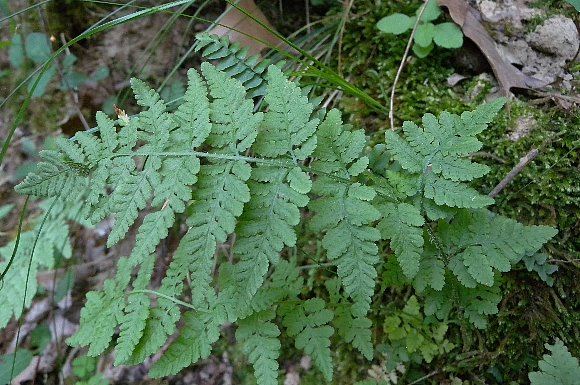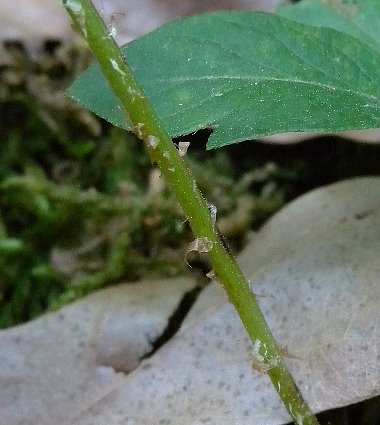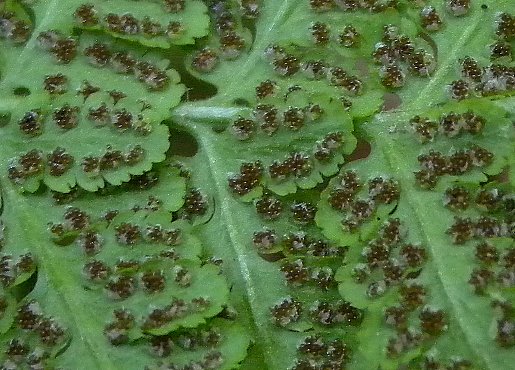
During the late spring or summer, fertile leaves develop spore-bearing structures on their undersides at the tips of forked veins. The indusia (membranous coverings of the sporangia) split open to reveal their sporangia (resembling minute brown beads). Each indusium divides into 4-6 segments, creating a star-like pattern around its sporangia. Shortly later, the sporangia split open to release their tiny spores to the wind. The leaf blades are usually deciduous, although in protected situations they can overwinter. The root system consists of a short rhizome with fibrous roots. The petioles of older leaves often persist near the base of this fern; these petioles are of varying length.
Cultivation: The preference is partial sun to medium shade, moist to dry-mesic conditions, and rocky soil. New leaves are produced throughout the summer.

Range & Habitat: The native Common Woodsia is occasional in most areas of Illinois, except the east-central section, where it is rare or absent (see Distribution Map). Habitats include bluffs, slopes of rocky woodlands, rocky banks along streams, sandstone and limestone ledges (in shaded areas), and rocky banks along service roads or gravel paths. Common Woodsia is typically found in higher quality woodlands that are rocky or hilly.
Faunal Associations: Information about floral-faunal relationships for this fern are largely unavailable. Some ground-nesting songbirds, such as the Kentucky Warbler (Oporornis formosus) and the Worming-Eating Warbler (Helmitheros vermivorus), benefit from the cover that is provided by ferns on wooded slopes.

Photographic Location: A wooded slope along a gravel path in Pope County, Illinois.
Comments: This medium-small fern can be distinguished from other similar ferns by the prominent scales on its petiole and rachis and the rather blunt tips of its leaflets. Usually, the indusia of other ferns (e.g., Dryopteris spp. & Cystopteris spp.) partially cover the sporangia before fading away. The indusia of Common Woodsia, in contrast, split open to form star-like patterns around their sporangia (a 10x hand lens may be necessary to see this). This is an unusual characteristic among ferns. Another species in this genus that can be found in some areas of Illinois, Woodsia ilvensis (Rusty Woodsia), is a slightly smaller fern that prefers exposed dry areas. The leaf undersides of this latter fern are densely covered with woolly hairs that are initially white, but later become rusty-brown.